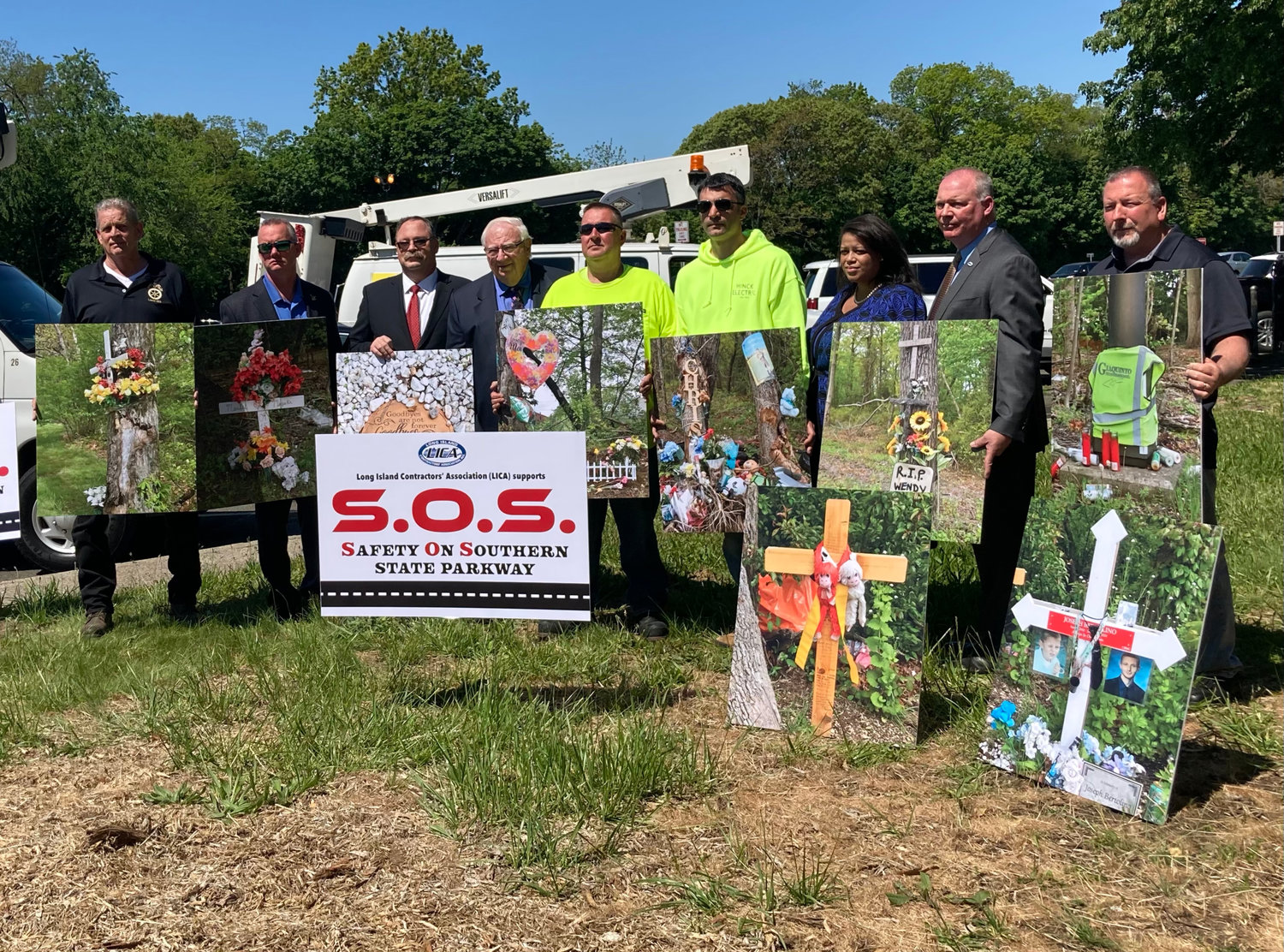Solutions sought for Southern State's 'Blood Alley'
Bill would improve infrastructure on the road Valley Streamers know too well
With a 10-mile stretch of road referred to as “Blood Alley,” between Exit 17 in Malverne and Exit 32 in Farmingdale, the Southern State Parkway is known as one of the most dangerous thoroughfares in Nassau County. Recently, though, state legislators proposed a bill aimed at increasing safety measures and helping reduce crashes, and deaths, on the road that many Valley Streamers know all too well.
The legislation, dubbed the S.O.S. Safety on the Southern State bill, was introduced by State Sen. John Brooks, a Democrat from Seaford, and Assemblywoman Michaelle Solages, a Democrat from Elmont. The legislation seeks to designate a portion of the parkway as a “highway safety corridor.” The lawmakers are looking to add signage, increase law enforcement presence and double traffic violation fines to curtail unsafe driving.
The lawmakers are also exploring the possibility of introducing new technologies that could be used along the most dangerous parts of the road, which runs from the Cross Island interchange, on the Queens-Nassau border, to the Sagtikos State Parkway, in Suffolk County. They are looking to collaborate with the Department of Transportation and law enforcement to make the infrastructure changes and identify the specific types of technology that can be used to reduce accidents. Although the DOT conducted a study on the parkway’s safety issues, the entire results have not yet been shared with the legislators.
“We must adapt to new times and build the infrastructure to make the roadway safer,” Solages said, noting that the Southern State Parkway was constructed at a time when cars were slower and heavier, and could not maneuver as fast as modern vehicles. Construction began on the parkway nearly a century ago, in 1925, and was completed in 1927.
While the lawmakers said new infrastructure must be added to improve road safety, studies have revealed that the real problem may be human behavior, they say.
“This bill is starting to look at what might be the real problem: how people are operating their vehicles on this parkway,” Brooks said of the proposed legislation. “Most of what we see is caused by human behavior.” He referred to drivers who might enter the parkway in the wrong direction, drive at excessive speed or cut in and out of lanes.
Solages said that too many people are dying on the parkway, and lawmakers cannot stay silent. “We have the facts. We have the information in regards to how we could make the roadway safer, and we’re ready to implement it here — it’s just smart,” she said. “We cannot see another death. We cannot see another injury here and . . . say, ‘Oh well, it’s human error.’ We have the ability to save lives.”
Solages said that sending the message that the Southern State is a highway safety corridor would improve driver awareness of the road’s potential dangers.
“We’re not going away. We’re going to keep this up. And if we have to, we’ll introduce much stronger legislation,” Brooks said. “We have to accept the responsibility of fixing this parkway, whatever it’s going to take. . . . Far too many families across Long Island have lost loved ones on this parkway.”
According to Marc Herbst, executive director of the Long Island Contractors’ Association, which announced its support of the bill, similar programs have been implemented in other states, including New Jersey, Pennsylvania and Arizona. If the bill were to become law, it would, however, be the first program of its kind in New York.
“This being the most dangerous road is opportune to do a pilot program in New York state,” Herbst said, adding that local labor unions would be part of the solution to help to save lives. “We won’t stop,” he said, “until we curb the carnage that takes place upon this highway and others. . . . We don’t want to build more memorials. It’s time to stop the carnage.”







